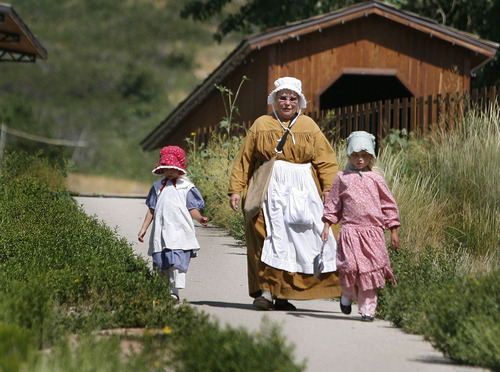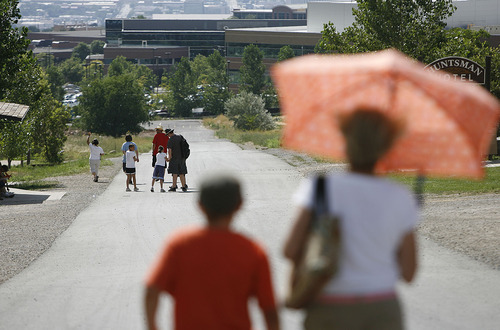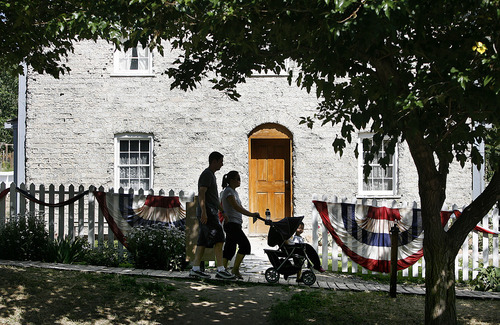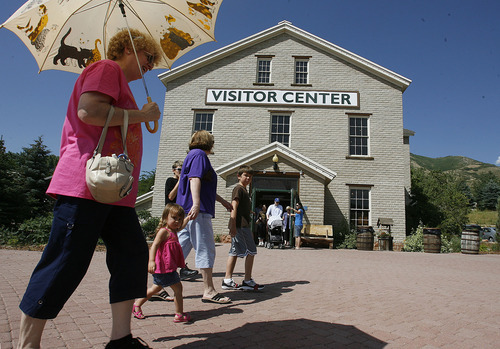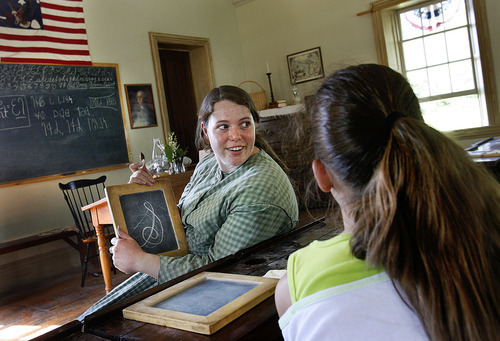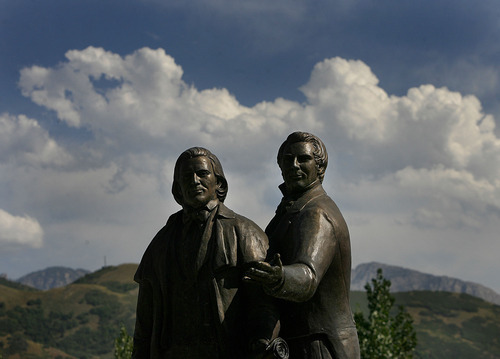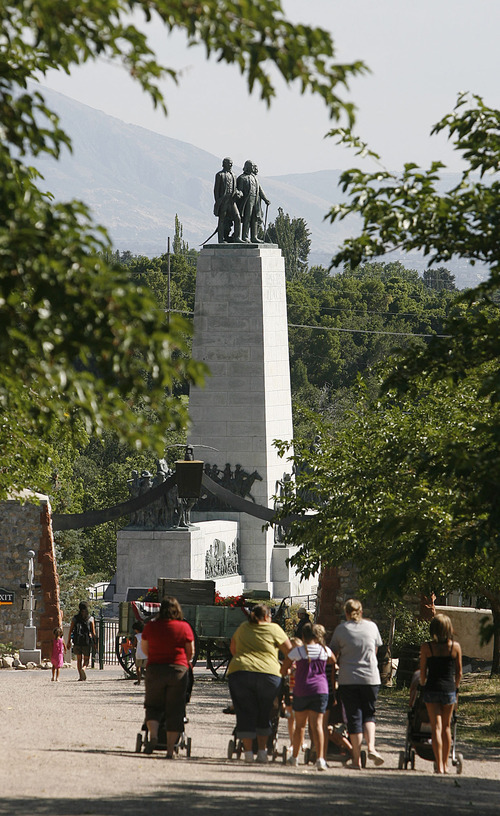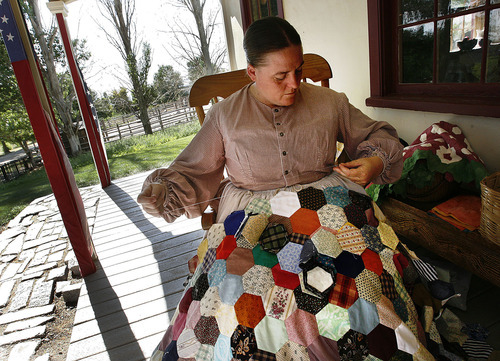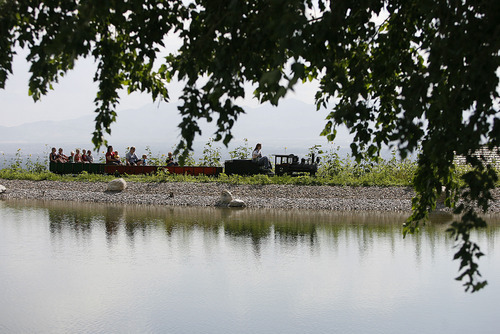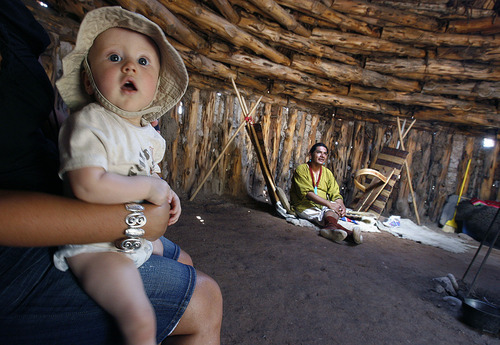This is an archived article that was published on sltrib.com in 2011, and information in the article may be outdated. It is provided only for personal research purposes and may not be reprinted.
Privatization has been a rallying cry for critics of troubled Utah State Parks who feel private companies could do a better, more efficient job of managing the state's 43 recreational, historical and scenic parks.
This Is the Place Heritage Park at the mouth of Emigration Canyon is often touted as an example of how privatization of a state park can work.
Few realize, however, that This Is the Place is technically still a part of the Utah State Parks system, receives $800,000 annually from general fund money allocated for state parks, and runs as a nonprofit foundation.
Ellis Ivory, executive director of This Is the Place and chairman of the foundation's board of directors, and Mary Tullius, director of Utah State Parks, agree the misconception of privatization as an ultimate answer has been overused.
"I've been asked about that a few times, and I really don't think This Is the Place is a good pattern for other state parks," Ivory said. "This park is so unique. There is no other park in the entire system where private donors have contributed over $30 million. There is just a uniqueness about This Is the Place that makes it very difficult to use as a prototype for other parks."
This Is the Place has evolved into a unique hybrid of a nonprofit foundation relying on major donations and an annual contribution of taxpayer money to help reach its $4 million operation budget.
This Is the Place was struggling financially as a state park in the mid-1990s when then-director Courtland Nelson wrote a letter to the governor suggesting a nonprofit umbrella organization be created to manage the park. The state would annually contribute $800,000, and ownership of the property, artifacts and grounds would remain with the state.
The transfer of management to the foundation became official on July 1, 1998, and the lump sum has been paid on July 1 every year since.
Ivory said the $800,000 currently accounts for about 20 percent of the operating budget of This Is the Place and that "without it, we would probably tell the state to take it back."
Tullius said if the park were handed back to the state, it would most likely be boarded up and closed until more money could be secured.
The $800,000, taken directly from general funds money appropriated to Utah State Parks, for fiscal 2011-12 accounts for 12 percent of the $6.8 million total Tullius has to work with for the other 42 parks.
In 2006, This Is the Place had to ask for money in addition to its annual allocation. Following reports that the park was running out of money, the Legislature approved a one-time supplemental appropriation of $2 million from state general funds.
There have been other money woes. Matthew Dahl, former executive director of the park, has been federally charged with swindling $240,000 from the foundation over 2½ years. He faces a maximum sentence of 20 years in prison and a $250,000 fine if convicted.
Visitors to the park have climbed steadily since the foundation took over and made improvements and added more activities. Officials expect more than 280,000 people to experience This Is the Place in 2011. Gross revenue has also climbed but is still not enough to cover the $4 million operating budget.
"When I got involved, it was $350,000, last year it was $1.5 million and this year it looks like it could be $1.7 million," Ivory said. "Even with that $800,000 we are still relying on a lot of private donations to keep the park open."
Although it is technically part of the state parks system, This Is the Place does not accept annual state park passes and shows no connection to the state through links on its website — http://www.thisistheplace.org.
Tullius serves on the foundation's executive committee, but the state has no say in the management of the park.
"This Is the Place is a tremendously significant historic site," Tullius said. "We count it as a state park because we own the property and the buildings, but the decisions are made by the foundation in their best interest to eventually make it a self-sustaining park."
While the annual payment of $800,000 to This Is the Place has not been a part of the overall Utah State Park budget cuts yet, Ivory is still concerned about what it means for people across the state.
"In general, I really think that though these are tough economic times, that the idea of cutting money for state parks is not a good idea," he said. "There are many elements to state parks that are sort of hard to prove on paper. The enjoyment that people get at the parks is hard to measure in money, and the economic benefits to local and state economies can be hard to realize. We need to leave the parks alone."
brettp@sltrib.com Tribune series: The issues facing Utah's state parks
July 3 • Utah's 43 state parks are reeling from budget cuts, which have slashed general funding from $12.2 million to $6.8 million in recent years.
July 3 • Rock Cliff Nature Center at Jordanelle State Park closed July 1 because of budget cuts. Additionally, 23 full-time state parks positions were eliminated.
July 11 • Edge of the Cedars Museum, the largest federal depository for artifacts in the Four Corners, is holding on, despite being listed second on the Legislature's audit list of facilities under consideration for closure.
July 12 • Camp Floyd/Stagecoach Inn State Park and Museum has gone from what was essentially a restroom stop into a money-generating venture.
July 17 • The Legislature recommended eliminating law enforcement positions in Utah State Parks. Rural law enforcement agencies fear the changes could leave them shorthanded in times of need. Agency officials worry about public safety in the parks because of the reductions. Also, an update on ranger Brody Young, who was shot nine times during a patrol in 2010.
July 19 • Utah owns five golf courses managed by state parks. One, Wasatch Mountain, makes money, but the rest lose money — and Green River is in danger of closing.
July 25 • Budget cuts hit small staffs managing urban playground parks especially hard; rangers are left trying to juggle ensuring visitor safety with park maintenance duties.
July 26 • Rounds of golf played at Soldier Hollow and Wasatch Mountain's camping, hiking, off-highway vehicle riding, cross country skiing, fishing, picnicking and snowmobiling make Wasatch Mountain the most-visited park in the state, with more than 360,000 visitors a year.
Aug. 2 • The gem of the state parks' system very well may be Antelope Island. With its diverse wildlife and great views, it attracts nature lovers from all around the world.
Aug. 2 • Small rural water recreation parks such as Huntington, Hyrum and Steinaker are among eight rural Utah State Parks that require close to a million dollars in taxpayer dollars each year. Are they worth it?
Aug. 9 • To many, closing or handing off management of some state parks is the most obvious answer to the state parks' budget woes. It has been done before, but with mixed results.
Aug. 9 • Although it wouldn't be economically beneficial to put in more facilities at largely primitive areas, so-called forgotten parks have intrinsic value to the state.


